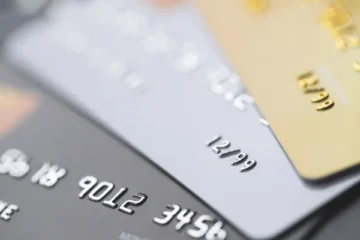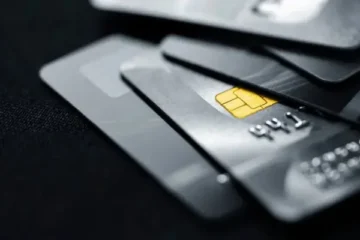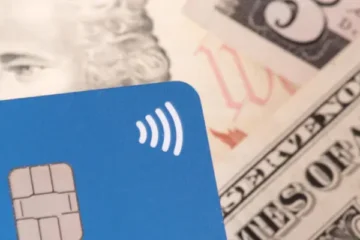What is cryptocurrency mining?
If you’ve ever heard of Bitcoin, Ethereum, or Dogecoin, chances are you’ve also come across the term “cryptocurrency mining.” And even though it might sound like rocket science, the idea behind it is actually simpler than you think.
Advertisement
In this article, we’ll break down everything you need to know about it—no tech jargon, just the basics. Let’s dive into how mining works, whether it’s still worth doing at home, which coins can be mined, and what’s coming next in this space.
Advertisement
What Is Cryptocurrency Mining?
Think of mining like a big puzzle-solving game—but with computers. When someone makes a crypto transaction, like sending Bitcoin to someone else, that transaction needs to be verified. And who does that? The miners.
They put their computers to work solving super complex math problems. If the computer solves the puzzle first, it “closes” a block of transactions and gets a reward in cryptocurrency. It’s like miners get paid to keep the system running smoothly.
Advertisement
So yeah, mining is used to:
- Verify transactions;
- Keep the network secure;
- Create new coins (at least for the ones that haven’t reached their max supply yet).
How Does Cryptocurrency Mining Work?

Picture a digital ledger called a blockchain. Every crypto transaction goes into that ledger. But before it becomes part of the official record, it needs to be verified—this is where the miners step in.
They take multiple transactions and try to “close” a block by solving a math equation. The first one to crack it wins the reward. It’s basically a competition between machines. And it’s happening in real time, with thousands of computers worldwide trying to solve the same puzzle.
The more powerful your machine, the better your chances of getting that reward.
What Do Miners Actually Do?
Miners are like the watchdogs of the crypto network. They make sure everything’s working properly, nobody’s trying to cheat the system, and all transactions are legit. And for doing that job, they get paid in cryptocurrency.
Here’s what they’re responsible for:
- Verifying that transactions are real;
- Preventing double spending (using the same coin twice);
- Keeping the network decentralized and secure;
- Earning rewards for each block they complete.
In short: without miners, the system doesn’t move. They’re essential for the whole thing to work.
What Is Proof of Work (PoW)?
You’ve probably seen this term floating around: Proof of Work. It’s the system most cryptos (like Bitcoin) use to make sure nobody’s cheating when verifying transactions.
Basically, PoW means that in order to validate a block, the computer has to “prove” it did some hard work by solving a complex math problem. That way, no one can just fake their way in.
Think of it like showing your report card at the end of the semester to prove you studied. The more powerful your computer, the faster it solves the puzzle—and the better your chances of earning a reward.
There are other methods too, like Proof of Stake (PoS), but PoW is still the most common in traditional crypto mining.
What Equipment Is Used for Mining?
Now that you’ve got the basics down, let’s talk gear. Because no, you’re not gonna get far using your school laptop or that dusty PC from 2010—at least not if you want to actually earn anything.
These are the most commonly used tools today:
- ASICs (Application-Specific Integrated Circuits): These are machines built just for mining. Super powerful, super expensive. Usually used in large-scale setups.
- GPUs (Graphics Cards): A popular choice for home miners. Still work well with coins that don’t need insane computing power.
- CPUs (Processors): Were used in the early days, but today they can’t really compete with ASICs or GPUs.
Besides that, you’ll also need:
- A good cooling system;
- Stable internet connection;
- Cheap electricity (we’ll talk more about this soon…).
Is It Worth Mining Cryptocurrencies at Home?
The million-dollar question! And the answer is: it depends.
If you live in a place where electricity is cheap (like some parts of Texas), and you already have a spare GPU or ASIC lying around, it might be worth a shot. But the truth is, competition is tough, equipment is expensive, and electricity costs can kill your profits.
Here’s a quick breakdown to help you decide:
It might be worth it if:
- You already have the equipment;
- Electricity is cheap in your area;
- You want to learn how the process works.
It might not be worth it if:
- You’ll need to spend a lot on hardware;
- Your electric bill is going to skyrocket;
- You’re looking for quick profits (mining isn’t magic).
Which Coins Can Be Mined?
Not every cryptocurrency is mineable. Some already use different systems like Proof of Stake and don’t rely on traditional mining anymore. But many still use Proof of Work.
Here are some of the most popular coins to mine today:
- Bitcoin (BTC) – the most well-known, but also the hardest to mine solo.
- Litecoin (LTC) – similar to Bitcoin, but more accessible for smaller miners.
- Monero (XMR) – focused on privacy and still a solid choice for home miners.
- Dogecoin (DOGE) – yep, the meme coin is still mineable.
Before picking a coin to mine, it’s smart to check the network difficulty and what kind of rewards it’s offering.
Risks and Disadvantages of Cryptocurrency Mining
Not everything in the crypto world is easy money and instant profit. Mining might sound like a great idea on paper, but in reality, there are some headaches that people only find out about after dropping a lot of cash.
If you’re thinking of getting into this space, it’s best to know the downsides first. That way, you avoid surprises and go in with your eyes wide open.
Here are the biggest risks you should think about:
- High energy consumption: your electric bill might shoot up and scare you.
- Hardware wear and tear: GPUs running 24/7? It’s only a matter of time before something breaks.
- Market volatility: crypto prices can crash, turning all your efforts into losses.
- Noise and heat: mining rigs are loud, heat up your space, and might annoy anyone living with you.
- Scams and frauds: lots of fake companies offer “cloud mining” and then disappear with your money.
Here’s the deal: do your homework, crunch the numbers, and only jump in if you know what you’re doing. Better safe than sorry.
Is Cryptocurrency Mining Legal in the U.S. and Around the World?
In the United States, mining is legal. But each state can have different rules—especially when it comes to energy usage. For example, Texas and Wyoming are more miner-friendly, while New York has placed restrictions due to environmental concerns.
You’ll also need to:
- Report your earnings to the IRS;
- Pay taxes on mined and later sold crypto;
- Stay updated on law changes (they happen a lot).
In Brazil, mining is also allowed, but profits must be declared on income tax. And of course, high electricity costs there make it harder to be profitable.
How to Start Mining Cryptocurrencies (Step by Step)
Thinking of putting your computer to work and earning some crypto? Here’s a simple step-by-step guide to help you get started with mining:
1. Choose which coin to mine
Not every crypto is worth it. Research which ones are profitable, check the network difficulty and earning potential.
2. Pick your equipment
Your machine type will directly affect your results. Here’s a quick breakdown:
- CPU: only for learning—very low mining power.
- GPU: good for mining altcoins like Ethereum Classic or Ravencoin.
- ASIC: professional-grade, more expensive, ideal for Bitcoin or other major coins.
3. Set up your rig
Assemble your machine, make sure it’s well-cooled, has a reliable power supply, and a stable internet connection. You’ll also want to monitor the temperature so your components don’t fry.
4. Join a mining pool
Mining solo is tough, so join a group (called a “pool”) to share the workload and rewards. Some popular ones:
- F2Pool
- SlushPool
- ViaBTC
5. Download and install mining software
This is the program that will get your machine working. Some of the most popular ones are:
- CGMiner
- EasyMiner
- NiceHash
6. Set up your digital wallet
You’ll need a crypto address to receive your mining profits. This can be an online wallet, a mobile app, or a hardware wallet.
7. Track your costs and earnings
Use online calculators to check if it’s worth it. Factor in electricity, time, and your crypto returns.
The Future of Cryptocurrency Mining
With all the changes happening in the crypto world, a lot is expected to evolve in the coming years. Ethereum, for example, already moved to Proof of Stake, ending traditional mining on its network.
What we can expect:
- More clean energy usage – companies are switching to solar and wind power.
- Stronger regulations – governments are tightening the rules on taxes and environmental impact.
- New technologies – possibly more efficient and affordable equipment.
- Fewer mineable coins – over time, more cryptos may abandon Proof of Work.
Bottom line: mining isn’t going away, but it will need to evolve with the market.
Cryptocurrency mining isn’t magic—but it’s not rocket science either. It’s something you can understand, try out, and depending on where you live and how much you’re willing to invest, it might even bring in a little extra cash.
But like everything in the crypto world, it’s smart to go in with your eyes open. Do your research, start small, and keep up with what’s happening. If it’s just for curiosity or to learn something new, it can definitely be worth playing around with. Now, if you’re in it for profit, that’s a whole different level.





